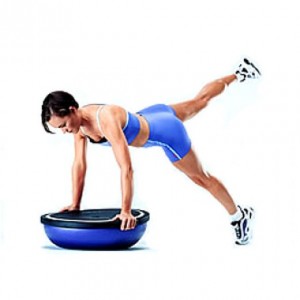
November 17, 2010
Is Functional Training Really Functional?
The term “functional fitness training” is one of the most hyped trends in the field of exercise. But what does the term “functional fitness training” really mean? I recently wrote an article for ASCM Certified Newsletter titled, “Is Functional Training Really Functional? that challenged many of the concepts promoted by fitness professionals as to how to achieve fitness that is functional. You can read the article at the link below: it begins on page 5.
term “functional fitness training” really mean? I recently wrote an article for ASCM Certified Newsletter titled, “Is Functional Training Really Functional? that challenged many of the concepts promoted by fitness professionals as to how to achieve fitness that is functional. You can read the article at the link below: it begins on page 5.
Is Functional Training Really Functional?
Here are the key points summing up the take-home message of the article.
1) For all practical purposes, there is no such thing as a “non-functional” exercise. Rather, the functional transfer of exercise exists on a continuum, where some exercises are more functional than others based on the needs of a particular functional task. I’ve coined this the “functional fitness continuum.”
2) The primary reason that most people lose functional capacity is due to a loss of muscle tissue. Therefore, simply increasing a person’s strength will promote better functional capacity. This can be achieved through any type of resistance training, whether it be machines, cables, body weight or free weights. Remember that strength is highly correlated with muscle cross sectional area (i.e. the size of the muscle), so increasing muscle development will generally promote greater functional capabilities in most people.
3) To optimize the training response from a functional standpoint, it is necessary to take heed of the principle of specificity. Simply stated, this means that the closer the training replicates the movements a person wants to accomplish, the better the transfer to performance of the movement. Thus, while a machine will promote functional improvements, free weights will tend to promote better results because they more closely approximate the way functional tasks are performed.
4) Unstable surface training is generally inferior to stable surface training in terms of promoting functional fitness. Realize that the vast majority of activities of daily living are performed in a stable environment. Thus, the concept of unstable surface training violates the principle of specificity; better transfer necessarily will be achieved by performing the exercises on stable surfaces. What’s more, stable surface training increases strength to a greater degree than comparable exercises performed on unstable surfaces, providing yet another advantage from a functional standpoint.
I will be co-presenting a workshop on the “Functional Fitness Continuum” (with my colleague Jay Dawes) at the upcoming NSCA Personal Trainer Conference this March at Bally’s Hotel and Casino in Las Vegas. Hope to see you there!
Feel free to send along any comments you have on the topic. I’d love to hear your thoughts.
Stay Fit!
Brad
3 Comments
RSS feed for comments on this post.
Sorry, the comment form is closed at this time.





 Entries (RSS)
Entries (RSS)




These articles are second to none. What I like most is the logical approach. I’ve said the same about ‘functional fitness’ for years but had many know it all trainers tell me I’m wrong. I knew my logic was right. Keep it up!!!
Comment by John T — December 1, 2010 @ 2:21 am
Great article Brad! I’m a huge fan of your work.
Keep it up!
Comment by Etienne Asselin — February 11, 2014 @ 3:31 pm
Thanks Etienne. Cheers!
Brad
Comment by Brad — February 11, 2014 @ 10:09 pm